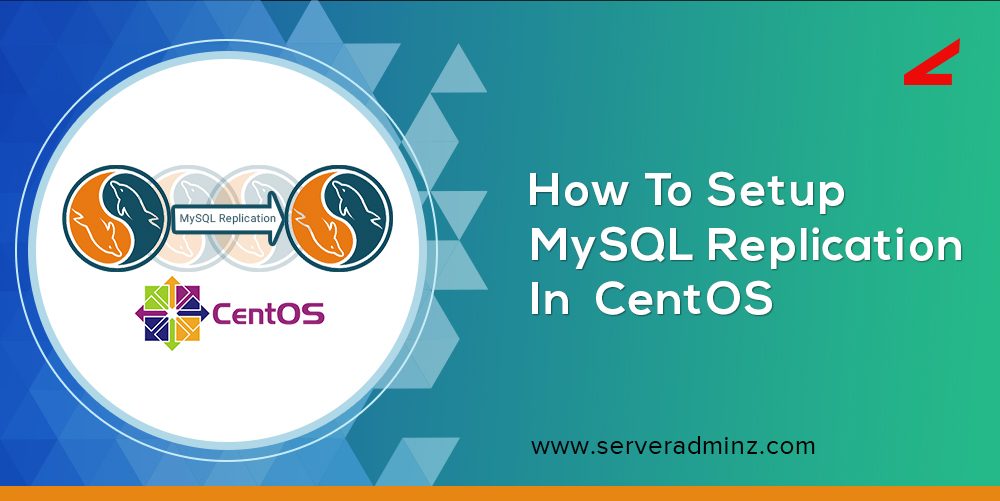MySQL replication process enables you to conveniently maintain multiple copies of a MySQL data. This facilitates a way to copy MySQL data from a master to a slave database. The important application of MySQL data is to spread the read access across multiple servers thereby improving the scalability. Apart from that, it is also used to analyze data on the slave to avoid master overloading and to tackle failover.
MySQL replication scheme is of 2 types
- Asynchronous replication
- Semi-synchronous replication
Asynchronous replication
Asynchronous replication, the most popular replication scheme is the default form of MySQL replication. In asynchronous replication, the master is responsible for writing events to its binary log and slave is responsible for requesting them when they are ready. We cannot guarantee that any event will ever reach any slave. Here a master does not wait for a slave, hence it’s a loosely connected master-slave relationship. The slaves are subjectively behind master in perusing and applying changes.
Semi-synchronous replication
In Semi-synchronous replication, the master does not confirm transactions to the client until at least one slave has copied the change to its relay log, and flushed it to disk. To enable semi-synchronous replication a plugin installation required and should be enabled on designated MySQL master and slave.
How to Setup MySQL replication in CentOS
We will use two test CentOS 7 virtual servers for this tutorial with the following IP addresses:
MASTER: 143.234.892.1
SLAVE: 143.234.892.2
1)Log in to the master server as user root
ssh root@ip_address
2) Check if MySQL server is installed on the server, if not install MySQL by the following command.
yum install mysql-server mysql
3) Once step 2 is finished, make sure to start the MySQL server and enable it to start at boot time.
systemctl start mysql
systemctl enable mysql
4) Edit MySQL configuration file as mentioned below
vi /etc/my.cnf
server-id = 1
binlog-do-db=database_name
relay-log = mysql-relay-bin
relay-log-index = mysql-relay-bin.index
log-bin = mysql-bin
5) Save the configuration file and restart MySQL service to effect the changes.
systemctl restart mysql
6)Login to the MySQL as a root user and create a user for the slave server and configure it.
mysql -u root -p
mysql> GRANT REPLICATION SLAVE ON *.* TO ‘slaveuser’@’%’ IDENTIFIED BY ‘PASSWORD’
mysql> FLUSH PRIVILEGES;
mysql> FLUSH TABLES WITH READ LOCK;
mysql> SHOW MASTER STATUS;
mysql> SHOW MASTER STATUS;
+——————+———-+————–+——————+
| File | Position | Binlog_Do_DB | Binlog_Ignore_DB |
+——————+———-+————–+——————+
| mysql-bin.001 | 245 | database | |
+——————+———-+————–+——————+
1 row in set (0.00 sec)
mysql> exit
We will need the master’s coordinates that are going to be used for the slave server,
File: mysql-bin.001
Position: 245
Once it is finished reset the current password to a strong one. Now, if the database you want to replicate is not empty, create a dump from the database
database dump > mysqldump -u root -p –master-data database > /root/alldatabase.sql and transfer the dump file to the slave server
rsync -Waq -e ssh /root/alldatabase.sql 143.234.892.2:/root
Slave Server
7) To configure the slave server. Always make sure to log in as root user to slave server using SSH and install MySQL server as we did on the master server
Edit MySQL configuration file with the following lines.
vi /etc/my.cnf
server-id = 2
master-host=143.234.892.1
master-connect-retry=60
master-user=slaveuser
master-password=PASSWORD
replicate-do-db=database
relay-log = mysql-relay-bin
log-bin = mysql-bin
8) Save the file and restart the MySQL server for the changes to change effect.
systemctl restart mysql
Once the same is done we have to import the MySQL dump file from the master server
mysql -u root -p < /root/alldatabase.sql
9) Login to MySQL as a root user stop the slave and configure it where to look for the ‘master log file’.
mysql -u root -p
mysql> slave stop;
mysql> CHANGE MASTER TO MASTER_HOST=’143.234.892.1′, MASTER_USER=’slaveuser‘, MASTER_PASSWORD=’PASSWORD’, MASTER_LOG_FILE=’mysql-bin.001′, MASTER_LOG_POS=245;
mysql> slave start;
Use the MySQL username and password we created on the master server.
You can check the slave status by executing the following MySQL command.
mysql> show slave status;
*************************** 1. row ***************************
Slave_IO_State: Waiting for master to send event
Master_Host: 143.234.892.1
Master_User: slaveuser
Master_Port: 3306
Master_Log_File: mysql-bin.001
Slave_IO_Running: Yes
Slave_SQL_Running: Yes
Replicate_Do_DB: database
ServerAdminz is a server support company specialized in Outsourced 24/7 Web Hosting Support, Remote Infrastructure Management, NOC, Cloud and Enterprise Security Services. With over 10+ of years of experience in working with major Data Centers and ISPs with 130+ experienced technicians, we continue to manage more than 49,000 servers from 85+ countries and has bagged 5 international awards.
If you have any queries on how to set up MySQL replication in CentOS feel free to leave us a message and our representative will get back to you.[two_third last=”yes” spacing=”yes” center_content=”no” hide_on_mobile=”no” background_color=”” background_image=”” background_repeat=”no-repeat” background_position=”left top” border_position=”all” border_size=”0px” border_color=”” border_style=”” padding=”” margin_top=”” margin_bottom=”” animation_type=”” animation_direction=”” animation_speed=”0.1″ class=”” id=””]






Leave A Comment
You must be logged in to post a comment.